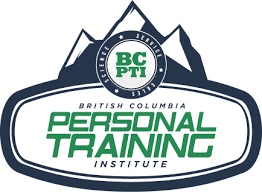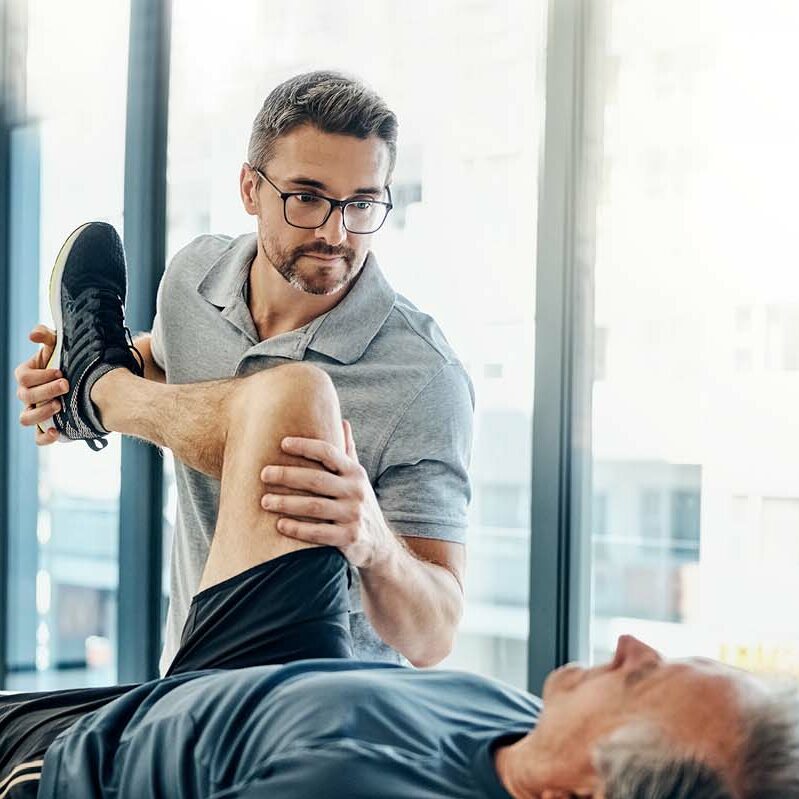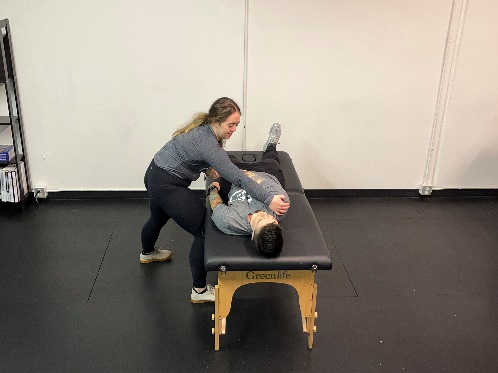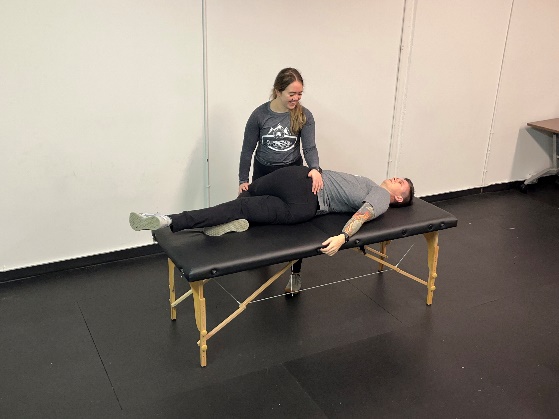Therapeutic Fascial Mobility (TFM) is a tool we can use as trainers to impact the state of a client’s nervous system, improve flexibility and add an extra level of service to our client’s sessions.
Therapeutic Fascial Mobility is a practice of assisted stretching that focuses on stretching fascial nets instead of isolated muscle groups. We combine fascial stretching, functional range conditioning and Muscle Activation Techniques to provide clients with relaxation, recovery and improved range of motion. We will also be discussing using vibration technology to enhance further recovery and how this fits into a stretching session.
Clients love TFM. They don’t even have to move because you do it for them! And they leave feeling more relaxed. Trainers can use TFM for 25-minute recovery sessions, 50-minute recovery sessions or at the end of a 50-minute personal training session. My clients often say this is their favourite part of the session!
There are other uses for TFM to like reducing muscle imbalances, shortening recovery time, better flexibility and reducing muscle tone.
We also talk a lot about fascia; it’s in the name, after all! To stretch fascia, you need to understand fascia. It’s an exciting part of the body, and when you know fascia, you will understand human movement more clearly.
Want to REGISTER for our upcoming TFM Course?
Send us an email to begin the registration process!
How Stress Influences the Nervous System
One of the significant benefits of using TFM is you can up-regulate or regulate the nervous with stretching.
Breathing is a huge part of nervous system regulation. Breath fast and up-regulate the nervous system, which activates the sympathetic nervous system. The sympathetic nervous system is active when we are in a state of fight or flight, awake, engaged, energetic. We use the sympathetic part of our nervous system when training and in most forms of exercise. It allows us to exert the most force, train our muscles to failure and get the training effect we are looking for to progress and reach our fitness goals.
The sympathetic nervous system is ALSO the part of your nervous system activated when you are stressed, anxious, lacking sleep, and rushing, which is where most of our clients spend most of their day.
Using the sympathetic nervous system is essential to smashing PR’s, training muscular failure, and winning a race. However, if we spend all of our time being up-regulated, we struggle to recover and adapt from stress. Even from a mental perspective, we make better choices, we listen to our bodies more, we are kinder, more focused, more mindful, more forgiving, and more of our true selves when we are not in a chronically stressed state.
The opposite of being up-regulated is being down-regulated, activating your parasympathetic nervous system. Most people don’t spend enough time here because we live in a fast busy, hectic society full of distractions of things looking for our attention. Our minds are often racing with all of our responsibilities and the stuff we have on our to-do list. The opposite of “up-regulated” is “downregulated;” this activates the parasympathetic nervous system.
Activating the parasympathetic nervous system looks like slowing down, relaxing, softening our bodies, calm, which feels good but can be challenging. Most clients want to feel good, so using techniques to help them recover gives you a valuable tool to use with clients.
How to Breathe During TFM Training
Ok, so how can we use TFM to change the state of someone’s nervous system? There are many strategies that we can use. We will talk about them in detail during the course. One of my favourite ways is breathing; it’s a good thing TFM uses a lot of breathing. We use breathing to increase the range of motion by helping the body relax. The more you can relax the tissue, the more muscle fibres we can access.
We can also change the speed of our breathing to regulate the nervous system. How does that work? Well, it’s pretty simple, when we cue the client to breathe fast and move their body more quickly, we activate the sympathetic nervous system. On the other hand, when we slow down the breaths and the speed of the stretches, we can get into the relaxed parasympathetic state.
Ok, let’s get into the stretches. Here are some of my personal favourite TFM Stretches.
TFM for Upper Body
Upper Trapezius
We are stretching the Upper Trapezius in Superficial Back Arm Line in this stretch. This muscle gets overactive due to a forward-leaning posture (desk sitting or texting), and elevated shoulders, tightness in this muscle can result in a lack of shoulder mobility, neck tightness or pain, and this is where people typically carry their stress in the body.
In the Upper Sequence, we hit this muscle from three angles to target and stretch as many muscle fibres as possible at 0 degrees abduction, 45 degrees abduction and 45 degrees adduction. Perform this stretch by placing one hand on the shoulder and the other on the client’s wrist. Traction the client’s shoulder by pulling their wrist away from their shoulder joint. Bring the shoulder away from the ear with your opposite hand by leaning away from the client’s shoulders. Then move into 45-degree abduction; bring your hand on top of the shoulder toward the wrist. Face away from the client and lean away from their shoulders. The third upper trapezius stretch is the 45-degree adduction where we bring the arm over to the opposite side of the table, place our outside hand on the top of the client’s shoulder, and with your inside hand, traction the client’s wrist. Then lean into the stretch by bending your bodyweight weight away from the table.
The cues used to stretch the upper trapezius are ‘pull up into my hand’ (hand on top of shoulder) and ‘shrug your shoulder up to your ear.’ While doing this stretch, keep an eye out for the shoulder rotating forward (coming off the table) and, if needed, cue clients to pull their shoulder down into the table. To increase the intensity of this stretch, you can ask the client to rotate their head to the opposite side.
TFM for Spine Health
Low back rotation
This stretch feels suitable for people who feel tight through the lower back region. In this stretch, we stretch the Functional Back Line, Spiral Line and the Superficial Back Line, which can become compressed from sitting, standing in an anterior pelvic tilt or lower crossed syndrome from muscle imbalances.
This is part of the Lower Sequence stretch. Start by placing the client’s foot on the opposite side of the table outside their knee. The trainer stands opposite to the table, slides their hand under the client’s sacrum, and stabilizes the foot by placing the outside hand on the foot/ankle to stretch. Lift the sacrum off the table and rotate the pelvis towards you. The cue for this stretch is ‘pull your hip back to the table.’ To maximize the stretch, ask the client to hold the table with their hand and keep their outside shoulder pressed against the table. To increase the intensity of the stretch, the client can turn their head to the side.
TFM for Lower Body
Hip Flexor & Quad
The Hip Flexor is a muscle in the Deep Front Line, and the Quad is in the Superficial Front Line. These stretches are great for people who spend a lot of time in hip flexion and posturally have an anterior pelvic tilt. Quads and Hip Flexors are sensitive muscles. In this stretch, listen to the tissue and do not force the movement.
Hip Flexor and Quad stretches are in the Side-Lying Lower Sequence. The client is lying on their side to perform these stretches, facing away from you. For the hip flexor stretch, place your outside hand on the front of the knee and your inside hand on the foot. Bring their leg back behind their body with some knee bent while the top hip stays rolled forward, and the low back is in neutral. Suppose the low back starts to arch cue the client to round their shoulder forward or come into a fetal position. Tell your client to ‘roll your top hip forward’ for a proximal stretch and ‘pull your knee forward into my hand’ for a distal stretch. When doing this stretch, imagine lengthening the front of the client’s body as much as possible.
We stretch proximally before distally because most restriction lies in the deepest layers of muscle and joint capsules.
For the quad stretch, we continue the hip flexor stretch by backing off the stretch a little bit and taking the knee into flexion to stretch the Quad by changing your body position for the foot is resting against the front of your hip and your outside hand is supporting the knee. The cues for this stretch are ‘push your foot into me’ or ‘kick me.’
For the Quad and Hip Flexor stretch, make sure that the knee and foot stay in line with the hip while you stretch.
BONUS Technique
Hip Traction
Hip traction is one of the warm-up movements and a transition between the stretches. Traction feels good and helps increase synovial fluid in the joint capsule and remove some of the tightness in the joint capsule. For very compressed people, this feels very relaxing.
To perform traction with two feet, you will cup both heels in your hands and lean back with your bodyweight. You can use this to feel where a client is tight or ‘jammed up’ in the fascial line with some practice. For best results, traction with feet slightly abduction and slightly externally rotated.
You can also do single-leg tractioning by cupping the bottom of the heel with your outside hand and the top of the foot with your inside hand, keeping the foot in a dorsiflexed position. This allows you to feel the difference in tightness from side to side.















Courtney is one of the most knowledgeable trainers I’ve ever met and worked with.
Besides all of her knowledge and professionalism, she has a kind but encouraging personality.